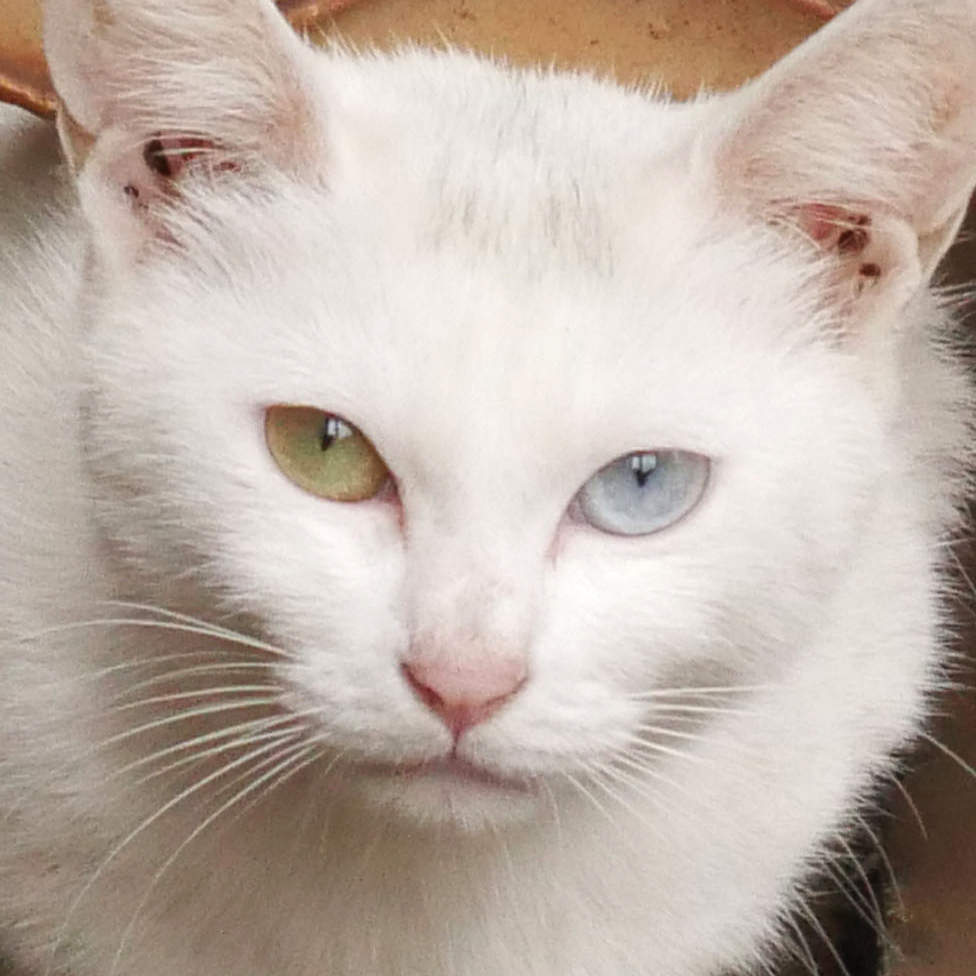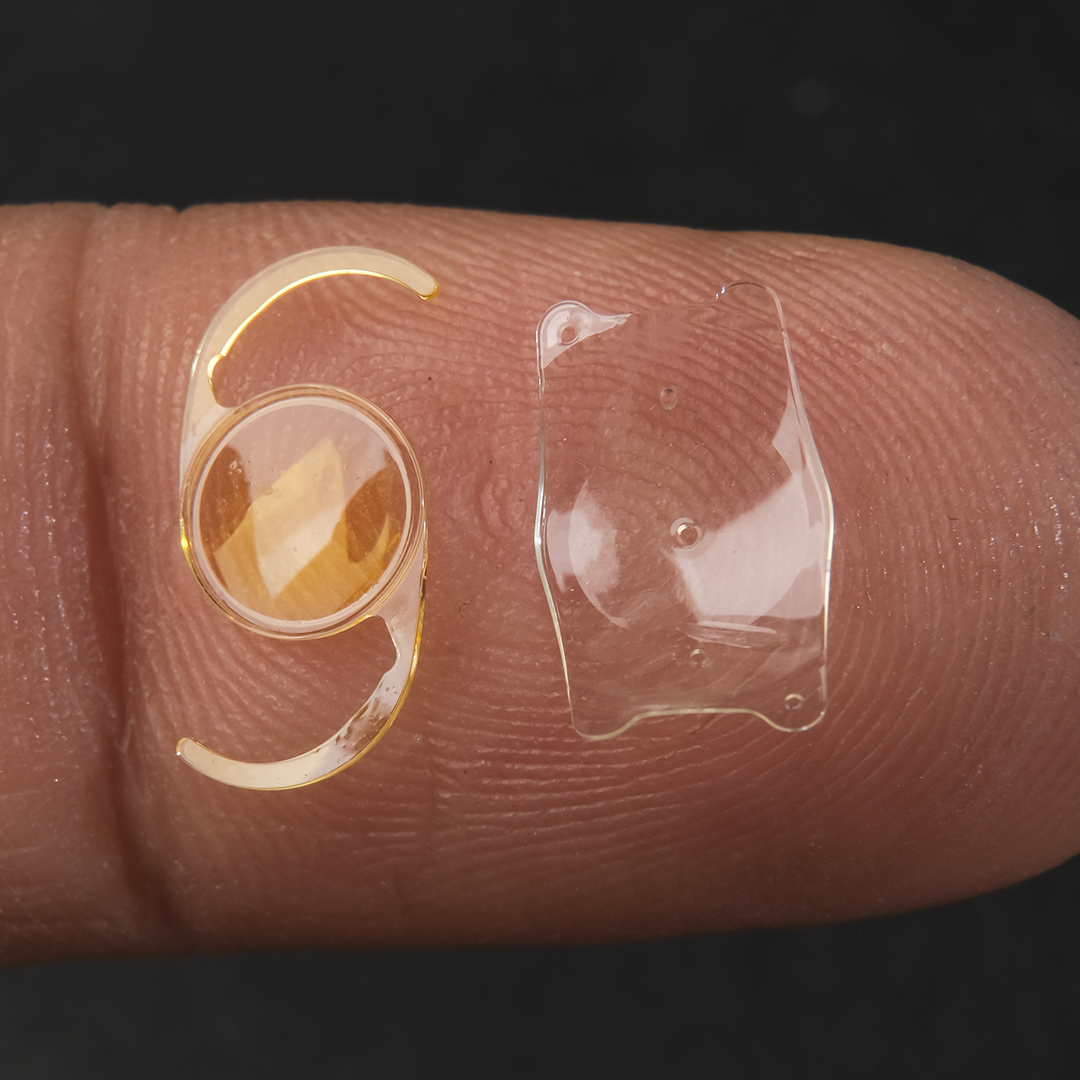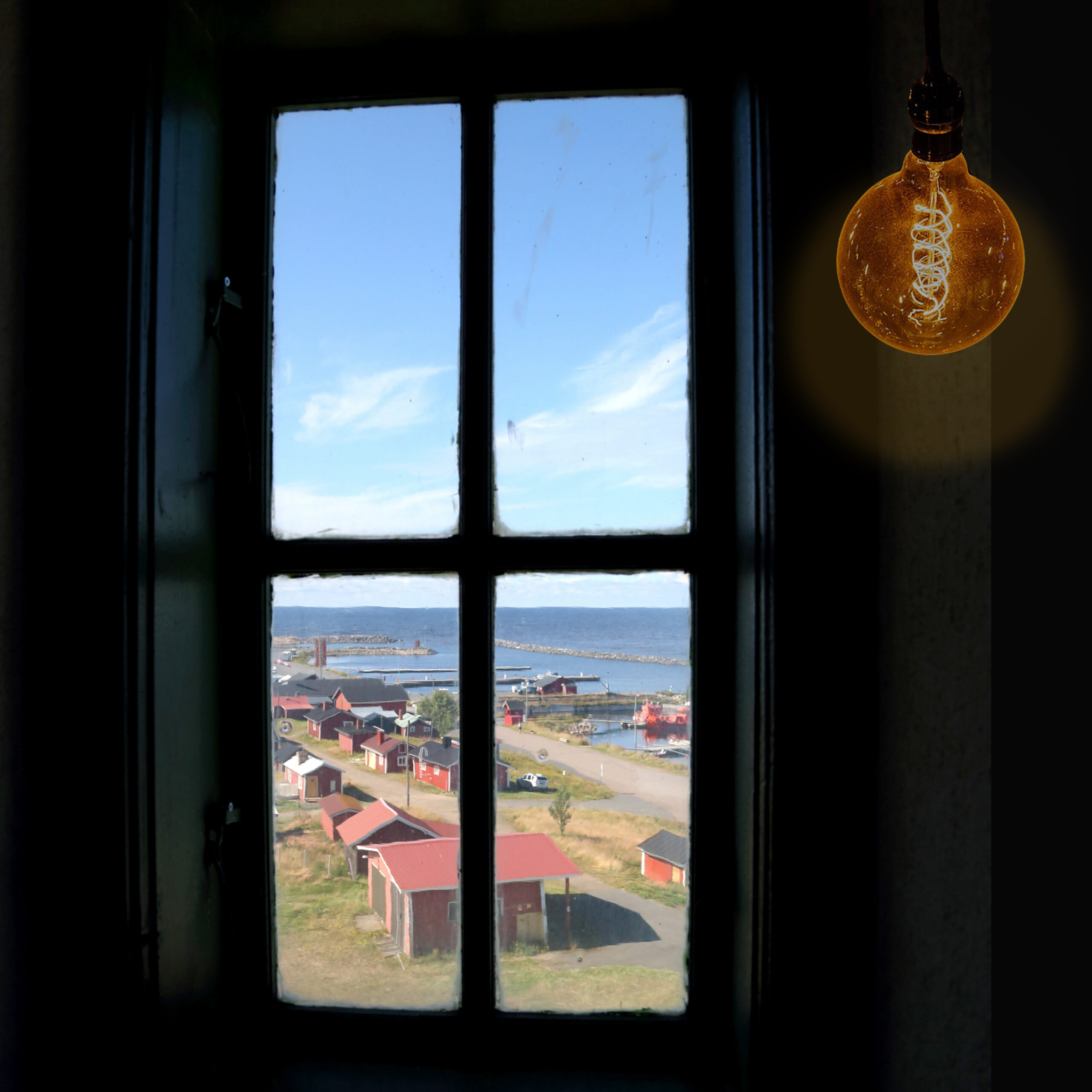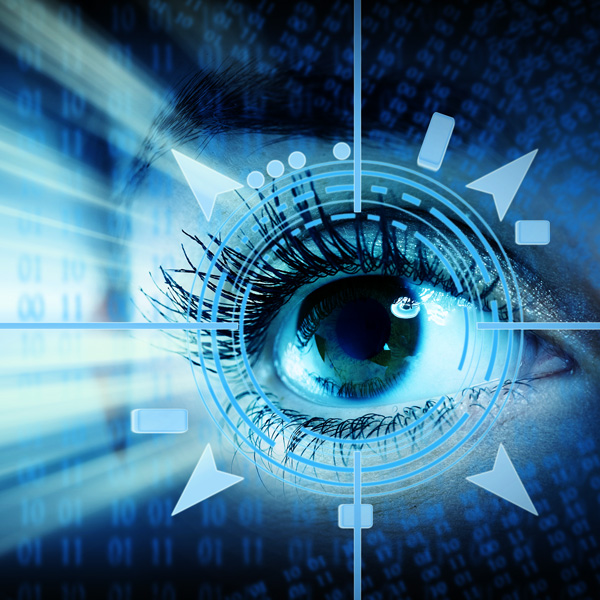
Blue light protection for elderly – is it necessary?
New studies show a connection between blue light and the development of cataracts. In today’s digital era, we are constantly surrounded by screens and modern

Anyone who follows research in the field of blue light protection knows the large number of studies that are published on this topic, and how inconsistently the term blue light protection is used in these studies. When science journalists then pick out individual results and present them for a lay audience, misunderstandings often arise. We took a recent radio feature as an opportunity to ask our scientific advisor, Dr. med. Alexander Wunsch, why it was once again claimed here that blue light from monitors is supposed to be completely harmless.

The topic of blue light is circulating through the media once again – this time with the underlying tenor that everything is harmless and that protective measures are not necessary. What’s the deal with these recent publications: who spoke up and who found out what? In this article we want to get to the bottom of the matter…
Before that, however, a few preliminary remarks:
But now to the matter itself: PRiSMA Innovative Eyewear, with the scientific support of Alexander Wunsch, MD, has been dedicated to the prevention of artificial light-induced eye damage and endocrine disruption for over 13 years. There are a number of good reasons to assume that artificial light can lead to such problems:
1. In cell experiments, it can be demonstrated with relatively simple means that artificial light, and especially the high blue content found in modern artificial light sources, damages cell metabolism. The main targets are the mitochondria, i.e. the cellular power plants that are essential for survival; the mechanism of damage is mainly through the light-induced production of oxygen radicals and oxidative damage caused by these.
2. Light-induced retinal damage has been observed in various animal models. Research examining light-induced retinal damage began in the 1970s, when it was found that quite ordinary laboratory lighting with fluorescent lamp light at workplace-standard illuminance levels was able to damage the eyes of rodents.
3. Another finding from animal models was the fact that the blue light content in artificial light has negative effects on chronobiological functions.
4. These “biological lighting effects” of short-wave light are now often exploited under the name HCL (Human Centric Lighting), for example to increase productivity at the workplace. There have been numerous studies on this, showing effects such as the ability of blue-enriched light to lower melatonin levels in the blood.



We know today that the issue of blue light protection must be considered in a highly individualized manner, as there are many different factors that play a role here: Genetics, previous damage to the retina, the balance between damage and regeneration, the presence or absence of protective spectral components, especially in the near-infrared range, etc.
Today, we still know too little to be able to say for sure whether a slight reduction in the blue component can really reduce the risk of blue-light-related damage and disorders. Therefore, we decided to eliminate the potentially harmful spectral components as effectively as possible. Only in areas of application where the legislator stipulates corresponding requirements, such as in road traffic, do we allow just enough short-wave light to pass through our filter systems for the products in question to receive approval.
With all other filter systems, we understand the term blue light protection in the most literal sense, in that we rigorously eliminate the spectral ranges that are recognized as problematic by experts. An important basis for this is the table provided by the CIE, from which the wavelength-dependent damage potential for the so-called Blue Light Hazard (BLH) can be obtained. In addition to such specifications, we constantly carry out our own measurements to ensure that the filter systems we develop deliver what we promise: consistently effective and individually adapted blue light PROTECTION.
For intraocular lenses, a debate has existed for many years about how much blue light reduction is needed and how much blue light should pass through the lens. Background: The blue components in natural light are important for synchronizing chronobiological rhythms. Thus, if all blue light were filtered away by means of the artificial eye lens, this would have negative effects on our circadian rhythm. Since the lens implant cannot be removed and reinserted at will, the manufacturers have to find a compromise to protect the macula on the one hand and to maintain the chronobiological cycles on the other hand. In addition, since the development of yellowish colored intraocular lenses, there have been two camps in this question: the manufacturers with patents for such technology and those without. Both camps have been opposing each other for many years, publishing studies that each support one approach or the other with their findings.
3. The report lacks scientific exactness: protective eyewear, contact lenses, and computer software are undifferentiatedly mentioned together without addressing the system-related differences or pointing out that the epidemiological studies refer to the statistically detectable effects of implant lenses alone. A critical comment on the limited significance of epidemiological studies is also omitted. For example, the method of stratification into the groups with tinted and non-tinted IOL implants is already potentially subject to error, because this involved only electronic searches for specific terms in the patient records. Regarding the specific filter properties of the implants, the authors of the Taiwanese study can only say that they vary (“the degree of absorption varied”). Regarding the occurrence of AMD, ICD-9 codes were used, which in all likelihood disregarded early signs of the development of this clinical picture, as they are now discussed in the recent literature.

A possible interpretation of the study results here could therefore actually be that such a low blue light reduction as is applied in these intraocular lenses is not sufficient to reliably protect the retina. This conclusion, by the way, would correspond exactly to our argumentation, namely that a mere reduction of the blue components is precisely not sufficient if one wants to protect oneself reliably.
Dr. med. Alexander Wunsch

In our view, there is no reason for an all-clear, as explicitly given in the broadcast, since the epidemiological studies used for this purpose are unsuitable to address such a question.
There is a recent experimental study (Mastromonaco, C. et al., 2021) which found that significantly fewer drusen were detectable in eyes fitted with yellow-tinted implant lenses than in eyes fitted with colorless lenses. Another study that investigated macular pigment after cataract surgery does see benefits to using yellowish colored IOLs (Obana, A. et al., 2021). Incidentally, the range of studies that consider blue-light protection to be useful is extensive and beyond the scope of this statement. It should be noted, however, that the multitude of measures to reduce high-energy light have an increasingly solid scientific basis.
The study “Effect of blue light-filtering intraocular lenses on age-related macular degeneration: A nationwide cohort study with 10-year follow-up” is unfortunately not available as full text. But even the abstract linked here shows the variation in the groups studied.
This study shows statistically significant differences in the development of pigment layer density after cataract surgery depending on whether the lens is clear or yellow tinted.
This studyinvestigates the presence of pathologic changes in donor eyes with intraocular lenses and concludes that they occur significantly less frequently when the inserted lenses have blue light protection.

However, other arguments were put forward to support the thesis of the harmlessness of blue light: The intensity of short-wave light in nature is much higher than the intensity of artificial light. Examples given ranged from 500 lux for artificial light and at least 5000 lux in bad weather to 100,000 lux on a sunny summer day. In this context, the question of pupillary response was raised, but rejected by the author as irrelevant: the role played by pupillary response were far too small.
For the facts: The pupil is able to reduce the amount of light entering the eye by a factor of 16. This would at least cover the difference between 500 lux up to 8000 lux. But how can one explain the fact that the eye can adapt well up to 100,000 lux? Thus, there must be other adaptive mechanisms involved in regulating vision in addition to the pupillary response.
The moderator’s objection about the pupil change was definitely in the right direction…
One mechanism that contradicts an argumentation: “natural light is much more intense and therefore cannot damage the retina” is the so-called chemical adaptation. The brighter the light in the environment, the more the visual pigments in the retina decrease. This effect is familiar to everyone who walks out of the sunlight into a dark interior – the eyes need some time to be able to guarantee full orientation again here: they have to slowly get used to the darkness. This is done by building up new visual pigment, which takes some time.
It is therefore valid:
1. The brighter the light, the more visual pigment is broken down, making the eyes less sensitive to light.
2. The darker conditions are, the more visual pigment is formed in order to still be able to navigate even at low light levels.
Why is the visual pigment so important in this observation? This must be formed again and again in the retina, because it becomes “used up” during vision. For this purpose, a cyclic process exists that regenerates the once-used visual pigment over various stages until it is finally available again for a new visual process. The problem here is that the intermediates of the visual pigment form oxygen radicals when they come back into contact with light prematurely. So, on the one hand, visual pigment is the basis of the visual process, but on the other hand, it acts as a photosensitizer that can damage the retina – it makes the retina more sensitive to the harmful effects of high-energy light.
The equations: “much light = high damage” and
“little light = little damage” therefore do not add up in reality. With reference to the laws of chemical adaptation, they must namely read:
“lots of light = low concentration of visual pigment = lower photosensitization = lower damage.”
versus
“low light = high concentration of visual pigment = high photosensitization = higher damage with unfavorable (= blue-heavy) spectral distribution”.
The actual conditions are thus much more complex and are inadequately described by a simple equation of intensity and damage potential. In addition to the wavelengths and intensities of incident light, a risk assessment must include mechanisms such as chemical adaptation and the relationship between damage and repair, as well as the temporal relationships of all mechanisms involved.

Whenever one comes across media reports that go in the direction of an all-clear, such as an article by the German Society of Ophthalmology that went through the press in September 2021, it can be seen that the authors are guided by definitions, studies and limit values that are in part decades old and have long since been questioned by renowned scientists.
Even the EU department responsible for risk assessment of new technologies (SCHEER) is not immune to referring to outdated beliefs and thus spreading misconceptions. For example, current findings were ignored when assessing the potential harmfulness of LED light sources, although (or precisely because?) these would have necessitated a complete revision of the assessments.

New studies show a connection between blue light and the development of cataracts. In today’s digital era, we are constantly surrounded by screens and modern

Screen glasses with blue light filters, which are recommended for working on a PC, would allegedly not offer much added value. This is the result

The PRiSMA® BluelightProtect LiTE95 filter glasses can be described as the UNIVERSAL filter with a true 95% blue light filter rate in the 400 to
